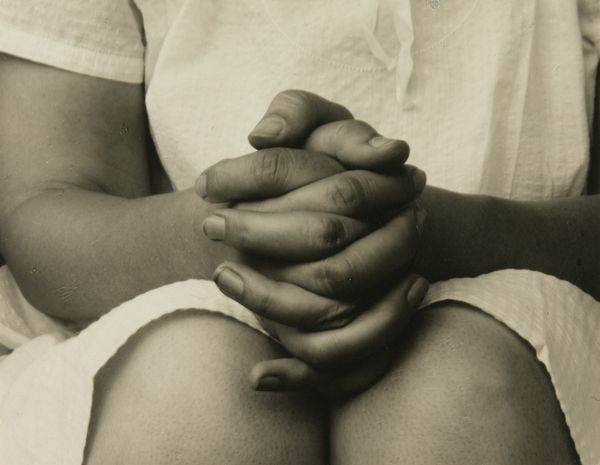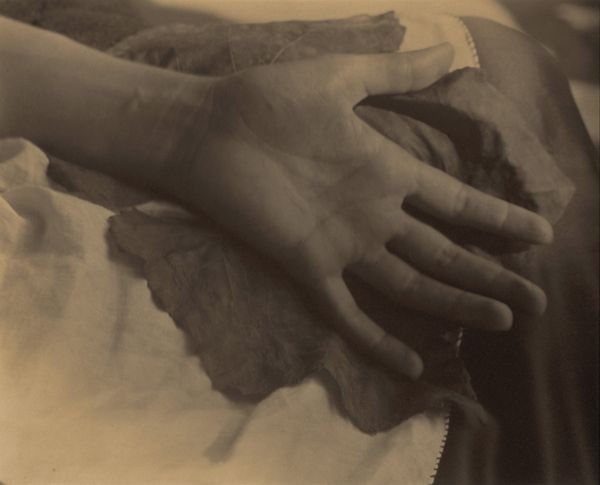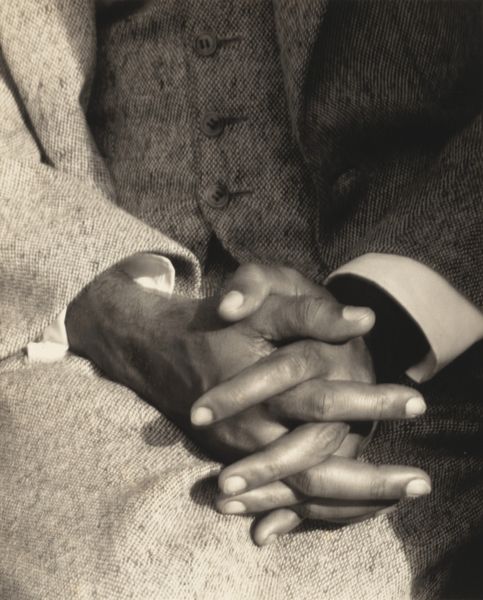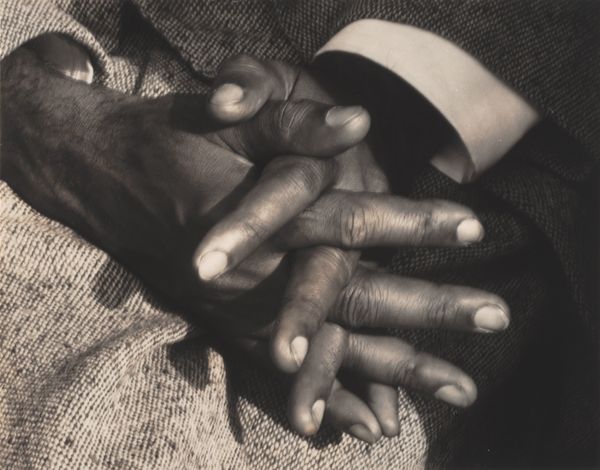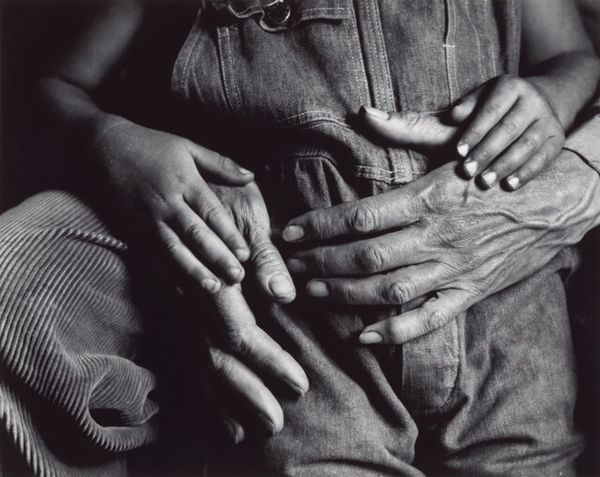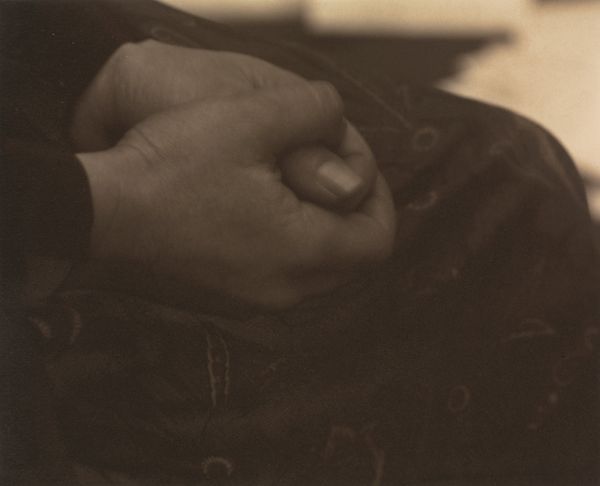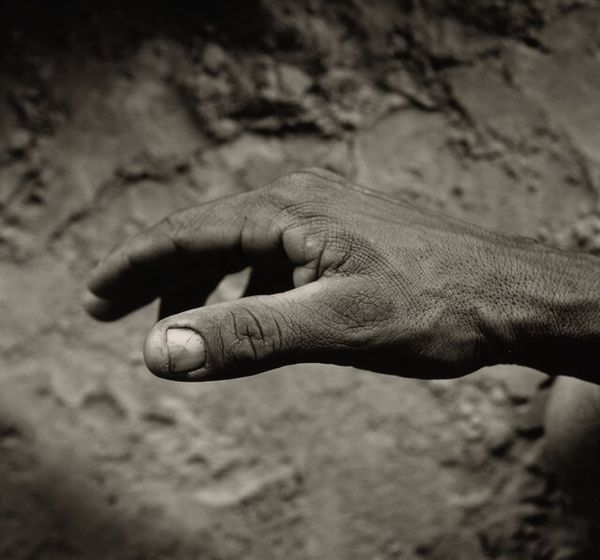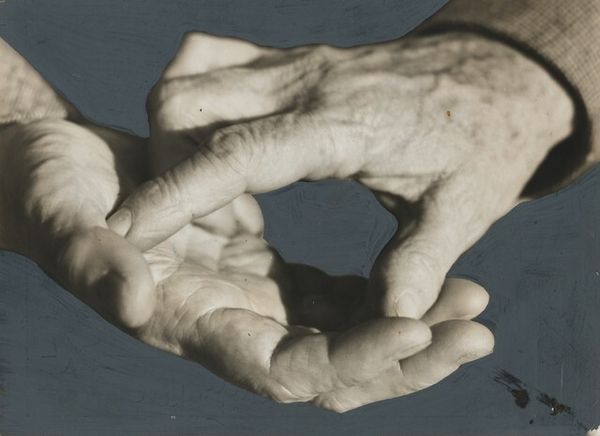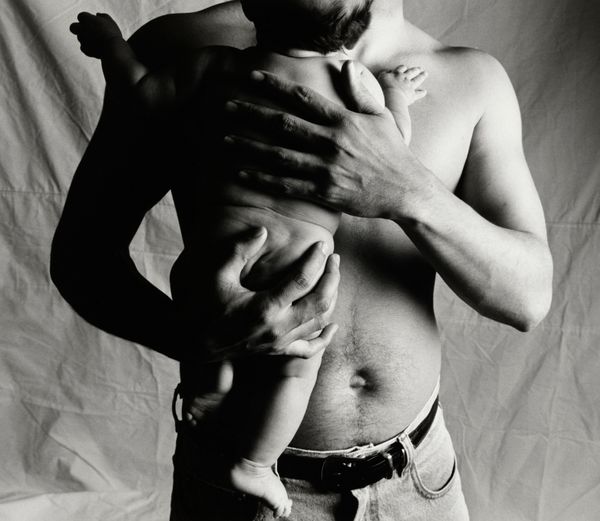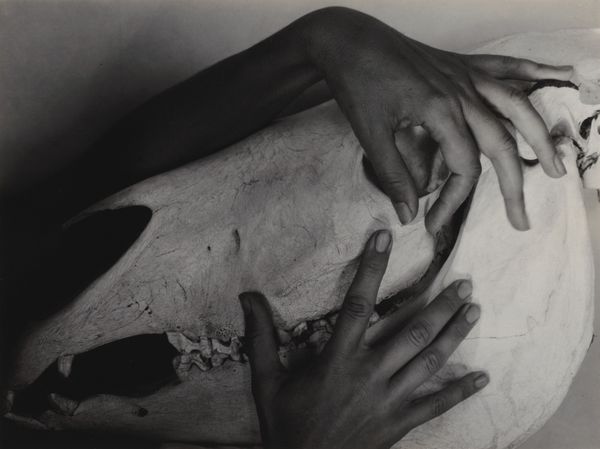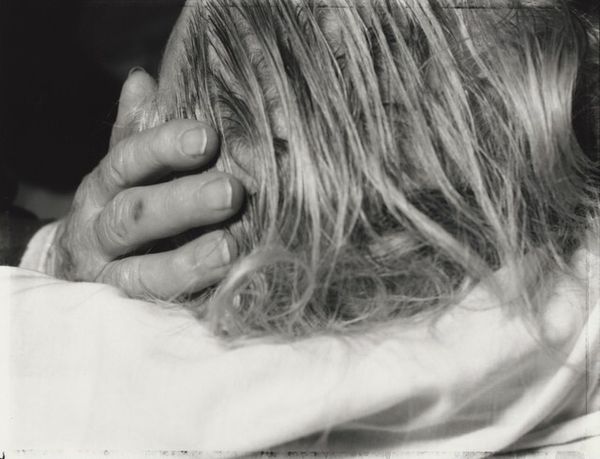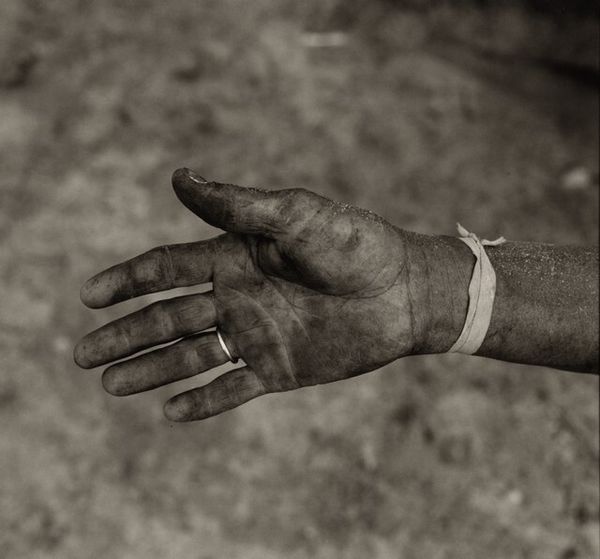
photography, gelatin-silver-print
#
portrait
#
portrait
#
form
#
photography
#
gelatin-silver-print
#
line
#
modernism
#
realism
Dimensions: sheet (trimmed to image): 9.3 x 11.6 cm (3 11/16 x 4 9/16 in.) mount: 33.2 x 27.3 cm (13 1/16 x 10 3/4 in.)
Copyright: National Gallery of Art: CC0 1.0
Curator: This compelling portrait, taken in 1933, is titled "Georgia O'Keeffe—Hands". It is one of many photographs Alfred Stieglitz took of the artist over their long and complex relationship. Stieglitz used a gelatin-silver print for this particular piece. Editor: It's amazing. Raw, vulnerable. I get this immediate feeling of introspection, maybe even a touch of anxiety. They're so intertwined, like a fragile knot. Curator: I agree. It's important to remember that Stieglitz, as O'Keeffe's husband and a renowned figure in the art world, heavily influenced her career and public image. His photographs, especially these intimate portraits, played a significant role in shaping her artistic persona. This one particularly underscores modernism's fascination with form. Editor: I'm caught by the lines and light, though. How the ridges and knuckles create this landscape. I see labor, worry... even tenderness, subtly. Photography freezes the moment. Do you think they represent more than hands here, maybe an entire relationship caught on film? Curator: It is tempting to interpret the interlaced fingers as symbolizing their complex union. One also must consider Stieglitz's project of documenting O'Keeffe. To present her—as subject and muse—in line with modernist ideals of feminine identity is so loaded with context and intention. Editor: Sure. Though the thing is, maybe context helps, maybe it clouds. All the academic, biographical stuff risks missing the essence—these are hands, like a painter’s tools— and I don’t think it requires context to feel the beauty or read tension in its curves. Art thrives, after all, because something resonates whether you hold a fancy degree or know anything about their marital struggles! Curator: True enough. It reminds us that even the most "personal" portrait has a public dimension, shaped by cultural narratives and power dynamics. Considering Stieglitz was keen to have photography respected in gallery culture, he needed these images to resonate with contemporary tastes. Editor: I like the friction between how formal or informal an image can be at once. Regardless of history or gender studies and all the critical apparatus—you can feel it! Curator: It speaks to art's enduring ability to transcend its time. It captures us today regardless of art politics, somehow. Editor: Agreed. An intense picture. What an image.
Comments
No comments
Be the first to comment and join the conversation on the ultimate creative platform.
